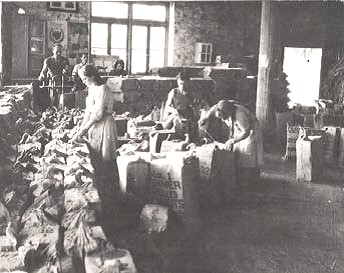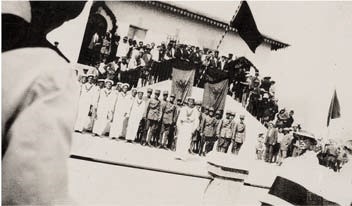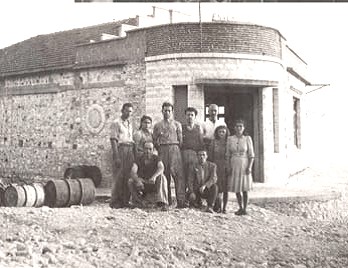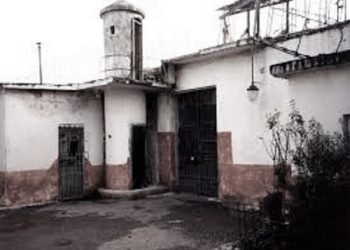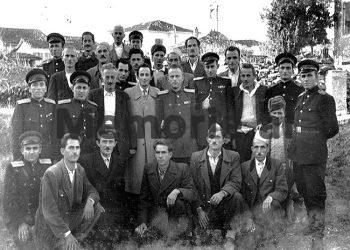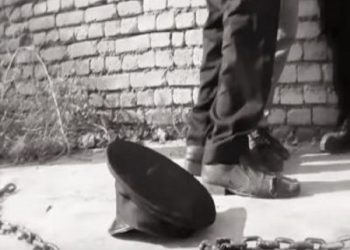By Fatmira NIKOLLI
DONATION ACT OF SARANDA BIRD OF THE KING OF THE ALBANIANS WITH THE WILLS OF THE PEOPLE
Memorie.al / Year 1937, on the 24th of March, Wednesday…! Based on the law on the donation of State property in Saranda, dated April 5, 1930 and the authorizing order of the Ministry of Finance telegraphically, the state property of Saranda was donated by the state to HIS MADHNIES TIJ ZOGUT-THE-PÄRHE, in the Office of Delvina’s mortgages, under his ownership: starting from the basement they demolished by the sea and placed at the gas tank, up to the monastery they demolished and bordered by the Lykursi sinuri, which Selim bey owns with a land patent and members, and from your monastery walk towards the side of Saranda and the ridge of the mountain, from Upper Dardha and Lower Dardha, to the field called ‘Bristane’ owned by Mitro Gjini, and from the small port of Saranda to the pasture, which consists of 4082 dynym… ! The Albanian Red Cross undertakes to continue beautifying the city of Saranda”.
The aforementioned notarial deed is a deed through which King Zog grants the Albanian Red Cross the state real estate located in the city of Saranda. A decision of December of the same year, taken by the central MIKTS Commission, is addressed to Her Imperial Highness, Princess Senije, Chairman of the Red Cross, for approval. It talks about the construction of 20 houses, 10 small and 10 with light material, to provide housing for the employees, for the construction of a cinema. Princess Senije approves it two days later, with the note: “We order the implementation” – Chairman of the Red Cross, Tirana, dated 5 December 1937 (signature).
From the celebrations of the people of Saranda, for the proclamation of the Kingdom, to concessions, investments from 30 to 500 meters, to documents, requests for permission, rare photographs, the soap factory with the name of the leader, to important notarial acts on historical debates of VKM, for the city of 40 saints.
Pieces of documented history have been shown in Saranda, in an exhibition. “The Saranda we had – Saranda in the first half of the century. XX”, is a documentary and photographic exhibition that the General Directorate of Archives and the Municipality of Saranda, opened on August 18, 2017, in Liman Square in Saranda.
GIVE SARANDA THE NAME OF THE KING
An Official Journal dated August 26, 1938, reflects a decision of the Council of Ministers, no. 753, dated July 6, 1938, to change the names of cities, villages and neighborhoods of Albania.
Among them, the name of the city of Saranda was changed to Zogaj (from King Zog i I ), while other names seem to have tended to be pronounced as: Bistrovica-Ksjethelzë, Dobronik-Bukuranje, Gjoroven-Maliplak, Ksamile – Mulliri, Mejden-Sheshe, Sultan Pajazit-Royal Quarter, Shurkave-Vjosa, Badlonja-Malakuqi, Bodari-Bora, Leusa-Mëshira, Leshica- Shëngjoni, Lipa-Bliri, Lipivani-Kershizë, Lushya-Lushnjë, Musukari- Myshqerre, Novosela – New village, Ogdunini-Qiparisi, Trebozishta-Trillagje, Goznishta-Uji i Tohtë, Rabani-Arbani, Zleusha-Bukuroshe, Çoroguni-Bregzalli, Potgorani-Nënmali, etc.
DEEDS, CONCESSIONS AND OTHERS
A correspondence between the Ministry of Finance and the Ministry of World Affairs, for the regulatory plan of the city of Saranda, correspondence between the sub-prefect of Saranda, with the prefecture of Gjirokastra, proposing the construction of the Saranda-Butrint road, as a means of promoting cultural tourism; a map of the regulatory plan of Saranda, drawn up by engineer Selim Zyma, in 1933.
There is also a law of the Kingdom, for the concession of the Vivar Canal in Butrint, to the “Dele” company, March 23, 1929. In addition to legal taxes, the “Dele” Company is obliged to build within two years for the benefit of the community: a a building for customs offices, a building for the Gendarmerie guard and a refrigerator.
Following are the letters to the “Dele” Society addressed to the prime minister, through which it announces that it has started the production of tapestries in November 1928, sends the statute of the society and also announces the arrival of a French ichthyologist in Vivar.
Quite interesting is a report of the mayor of Saranda, addressed to the sub-prefecture, which lists the public works done in the city between 1912-1937; roads are mentioned there, 100 and 500 meters, 25 and 30 meters, and among others the construction of a toilet is mentioned, as the letter says, “completely modern”.
The exhibition brings images of the municipality and the sub-prefecture, between the two world wars. There are inspection reports, with irregularities found in the offices of the Customs of Saranda, the plan of Bar-Butrint, the request of Mihal Zaho from Lugari i Gjirokastra, through which he asks the Ministry of World Affairs for permission to open a cinema in Porto-Edda ‘ in Saranda, on November 2, 1941, and the decision of the Maritime District Office of ‘Porto-Edda’ for the designation of permitted areas for Beach, in 1940, is the permit given to Mihal Zahos and the layout of his cinema.
“ENVER HOXHA” SOAP WORKSHOP
Under the leader’s name, a special place, not in terms of space or placement, but in terms of the subject, occupies in this above-mentioned exhibition (opened in August 2017), the soap factory in Saranda and its personnel, after 1944- is. The workshop, as can be seen from the images, bears the name “Enver Hoxha”, it produced soap.
The workers are seen with torn clothes, holding the soap molds, and while the men were wearing camel vests, on the walls you can clearly see the slogans of the time, for the People’s Republic of Albania, for the congresses, up to the order in capital letters on the wall: “To add and to improve production, because this is how the economy, popular power is strengthened and conditions are created for the improvement of our lives and of the whole people’ – “Maintain the strongest discipline at work”, etc.
Rare images are also those of the bridge of Kalasa (Shinjon) before 1944, the same bridge, but rebuilt after the destruction during the Second World War, as well as a postcard of the city in 1920, view of the bay of Saranda, map of the basin, the captain’s office of the port, the postcard of a road in Saranda, the staff of the “Chameria” dormitory, together with Neço Muka, the students and staff of the “Chameria” dormitory, etc.
CELEBRATION IN HONOR OF KING BIRD
The celebrations of the people of Saranda on September 1, 1928, on the occasion of the proclamation of the Kingdom, are just as beautiful, if not more so. From the images, it seems likely that the pariah is present, more than the people, but somewhere in the depth of the image, the children are pushed, and somewhere else the adults. The flag is flying and likely with the double-headed eagle in both images, although because they are black and white, only a black flag is visible in one eye.
Paria wears republican hats, berets, sun hats, and others wear simple hats, up to those of military uniforms. A handful of people, in honor of the King, some with canes and chaps, some with sandals and shorts. Women have not, or do not seem, or holidays of this type, were only for men. Memorie.al




